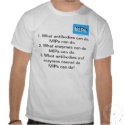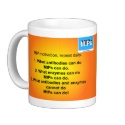|
|
Reference type: Book Chapter
Authors: Alvarez-Lorenzo C, Concheiro A
Publication date: 2006
Chapter title: Molecularly imprinted materials as advanced excipients for drug delivery systems.
Chapter number: 10
Page numbers: 225-268.
DOI: 10.1016/S1387-2656(06)12007-4
Alternative URL: http://www.sciencedirect.com/science/article/B7CTS-4M345D7-B/2/4866d9d7fd326114fba6b1951047e57b
Book title: Biotechnology Annual Review
Editors: El-Gewely MR
Publisher: Elsevier
Volume number: 12
Abstract: The application of the molecular imprinting technology in the design of new drug delivery systems (DDS) and devices useful in closely related fields, such as diagnostic sensors or biological traps, is receiving increasing attention. Molecular imprinting technology can provide polymeric materials with the ability to recognize specific bioactive molecules and with a sorption/release behaviour that can be made sensitive to the properties of the surrounding medium. In this review, an introduction to the imprinting technology presenting the different approaches in preparing selective polymers of different formats is given, and the key factors involved in obtaining of imprinted binding sites in materials useful for pharmaceutical applications are analysed. Examples of DDS based on molecularly imprinted polymers (MIPs) can be found for the three main approaches developed to control the moment at which delivery should begin and/or the drug release rate; i.e., rate-programmed, activation-modulated or feedback-regulated drug delivery. This review seeks to highlight the most remarkable advantages of the imprinting technique in the development of new efficient DDS as well as to point out some possibilities of adapting the synthesis procedures to create systems compatible with both the relative instable drug molecules, especially of peptide nature, and the sensitive physiological tissues with which MIP-based DDS would enter into contact when administered. The prospects for future development are also analysed. ® 2006 Elsevier B.V. All rights reserved
|


 MIP motivation T-shirt
MIP motivation T-shirt







 MIP motivation mug
MIP motivation mug







 Lab chick periodic table name shirt
Lab chick periodic table name shirt






